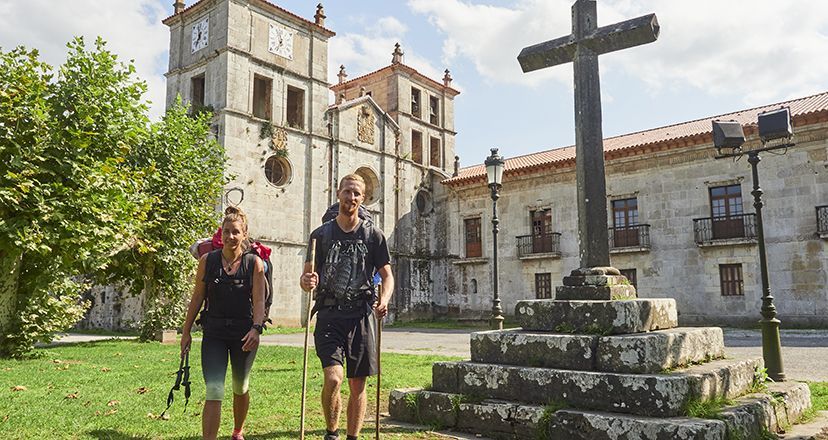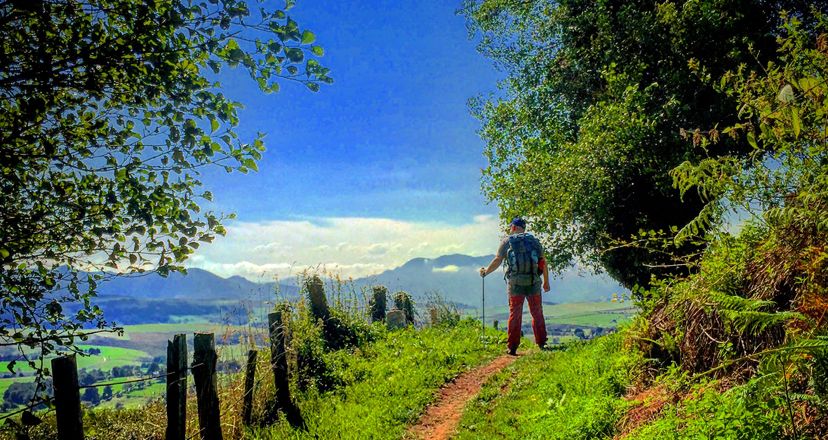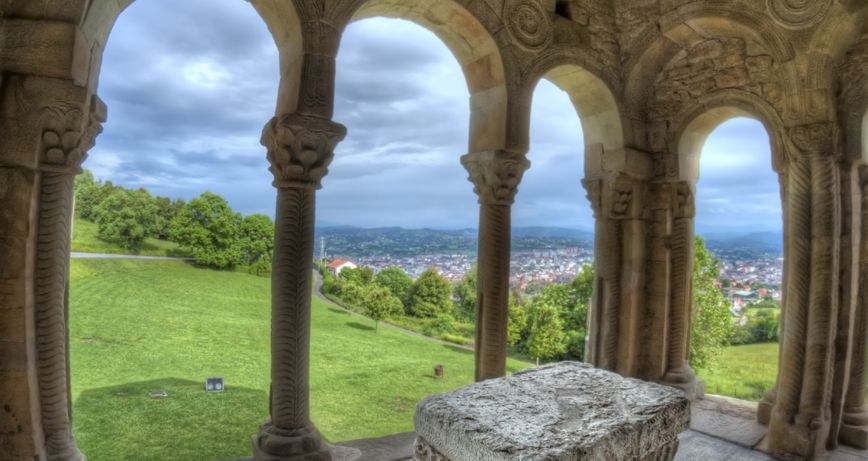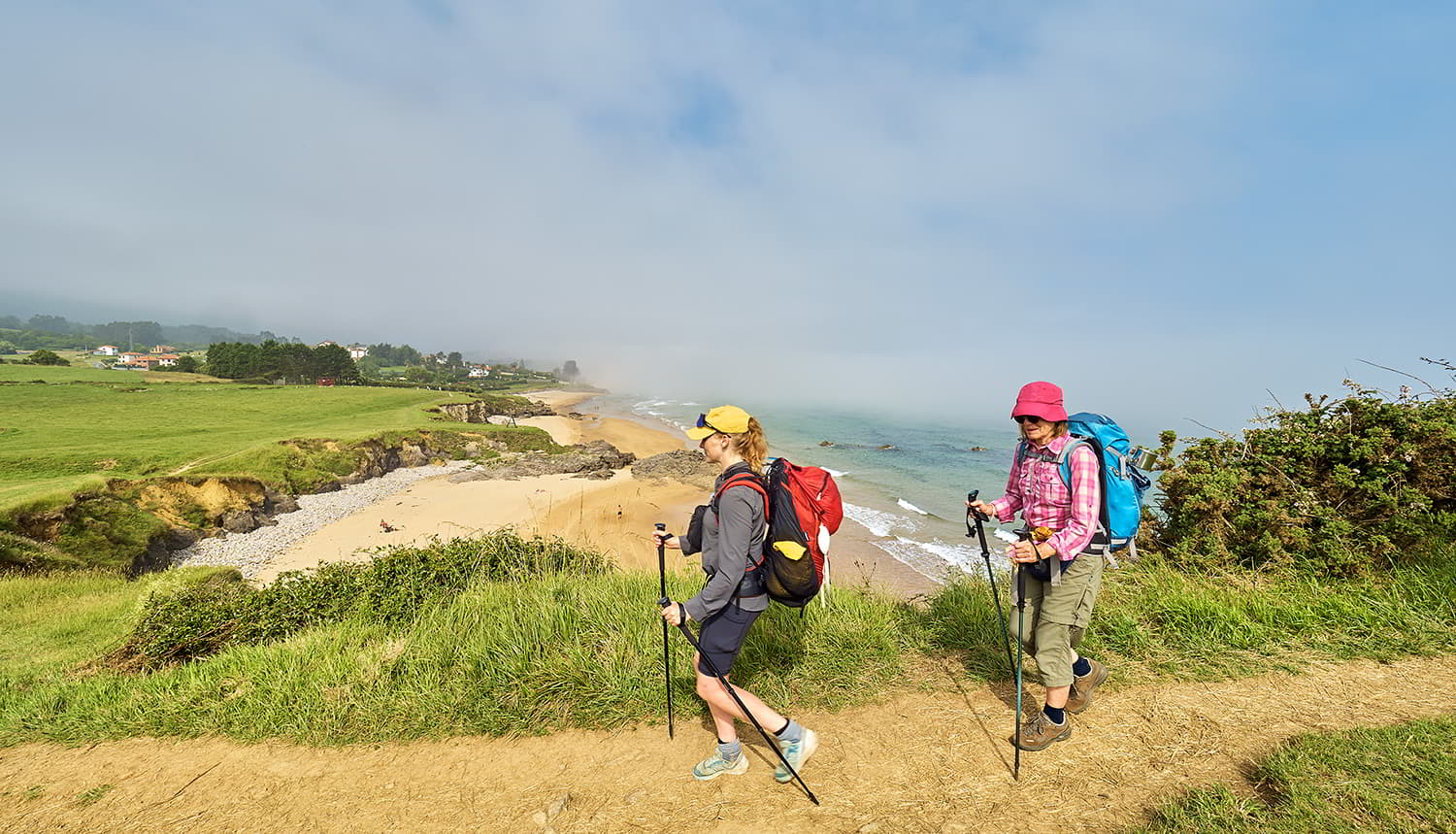Back Tips for doing the Way of St. James through Asturias
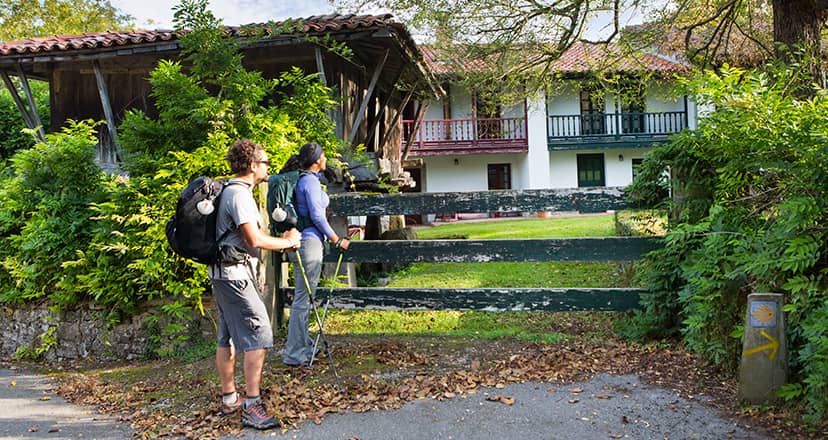
Tips for doing the Way of St. James through Asturias
The Camino de Santiago in Asturias offers interesting options to make the most of this route. Here are some suggestions and tips to make your Camino unforgettable.
Bon Camino! This exclamation expresses much more than a greeting or a wish. In reality it is the pure essence of the Camino de Santiago: pilgrimage, vital adventure, lifestyle, unequalled journey, path of friendship and solidarity, self-improvement, and so on to Finis Terrae...
The Way of St. James has become over the centuries one of the most remarkable cultural itineraries of humanity, and year after year it increases its popularity and arouses passions around the world.
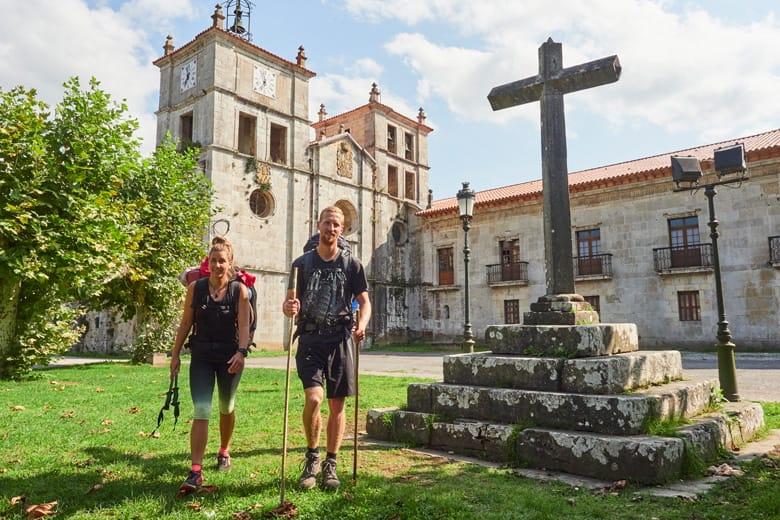
Moreover, with the outstanding singularity that the Way of St. James was born in the Asturias of the ninth century, then a medieval kingdom with a Europeanist vocation where the monarch Alfonso II, the ideologist of such a project, became the first pilgrim.
So if you choose Asturias to begin your Camino, or you arrive there as part of your pilgrimage to Compostela, you will be at the origin of this epic pilgrimage.
Either way, here are some tips to make the most of your pilgrimage experience in Asturias.
The Jacobean jargon you have to get to grips with
There are a number of words and concepts unique to the Camino that you have to know, to really get into the skin of the pilgrim.
Here are some essentials:
- Pilgrim's Credential: it is your passport as a pilgrim, a document that you must carry with you during your pilgrimage and that you must stamp in the parishes, brotherhoods, Associations of Friends of the Camino de Santiago and other points enabled for it, that you will find during the Camino. This document will serve to certify your passage through the different stages of the Camino, allowing you to obtain the Compostela.
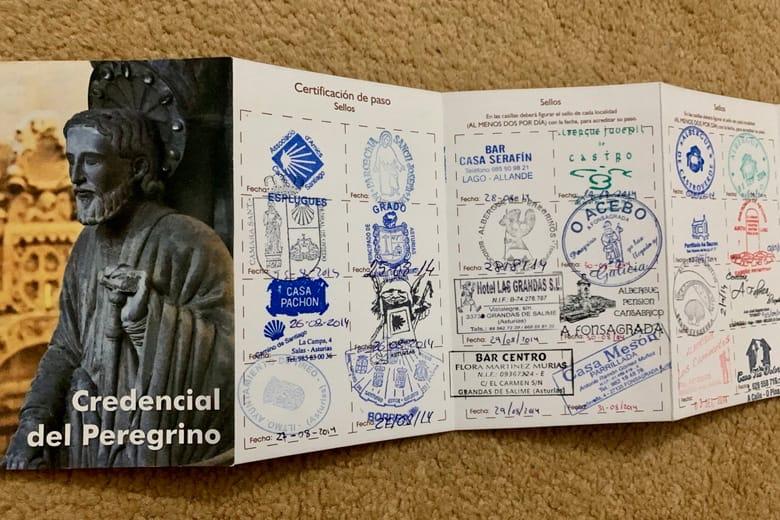
Consult the pilgrim's office to see the nearest point where you can get this credential.
- Compostela: this is the document that officially certifies your pilgrimage to the tomb of the Apostle. To do this you need to prove by means of the Pilgrim's Credential that you have completed at least the last 100 km on foot or on horseback, or 200 km by bicycle.
- ¡Buen camino!: this is the official greeting par excellence among pilgrims, Spanish or otherwise. You will see walkers from all over the world say "buen camino" as you pass, even if these are the only two words they know how to pronounce in our language.
- Ultreia: a term that corresponds to the Latin archaism of "buen camino". It is a voice of encouragement that was originally constructed as Ultreia, suseia, Santiago, and means something like "keep going, there is Santiago beyond". When one pilgrim greeted another with an Ultreia, the other would reply 'et suseia'! It is not very common nowadays, but you may find a pilgrim who greets you like this.
Plan your route in advance
The Camino de Santiago is a route that requires some rest and planning to enjoy it to the fullest.
You need to take into account different factors such as the time of year or the number of days you have available. Ideally, you should have a few days to spare in case anything unforeseen happens. One option, if you don't have much time, is to do the Camino at different times of the year, until you can complete all the stages.
Another important aspect to take into account is your physical condition. It will be good for you to do a minimum of prior preparation as a way of acclimatisation, thus avoiding injuries and unnecessary risks. Because the pilgrimage is suitable for everyone, but it requires a minimum level of physical fitness to carry it out safely and relaxed.
It is also advisable that you do each stage with some slack, so that the time of each day is not too short, and you can walk calmly, taking good note of everything that the Camino gives you.
It is recommended that you get up early and that your walking day ends at lunchtime, so that you can take advantage of the afternoon to rest and get to know the interesting places along your route. Also, if you are staying in hostels, you will get to them earlier in the morning, so you won't run out of accommodation.
Now, once you have all these logistical matters in mind... The most interesting thing is to choose your route!
As you know, there are many routes that lead to Santiago, but if you decide to do it from Asturias or pass through here, there are five options awaiting you:
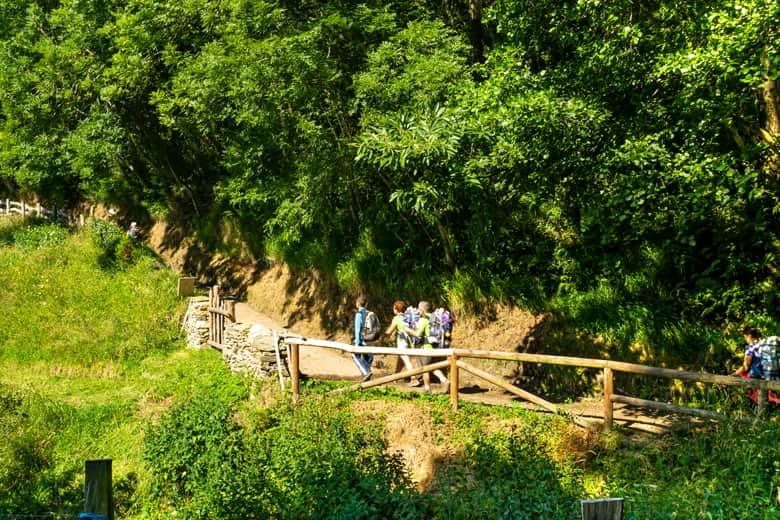
The Primitive Way - which is the origin of all the others -, which begins in Oviedo/Uviéu, passing through the councils of Las Regueras, Grado, Salas, Tineo, Allande and Grandas de Salime.
The Coastal Way, which runs through the councils of Llanes, Ribadesella, Villaviciosa, Gijón, Avilés, Castrillón, Muros de Nalón, Cudillero, Valdés, Navia, Coaña, El Franco, Tapia de Casariego, Castropol and Vegadeo.
The Salvador Way, which links up with the French Way and crosses the councils of Lena and Mieres.
The Camino de la Costa-Primitivo, which joins the Camino de la Costa with the Primitivo through Villaviciosa and Siero, and there is also a connection from the Primitivo to the Camino de la Costa, which goes from Oviedo/Uviéu to Avilés.
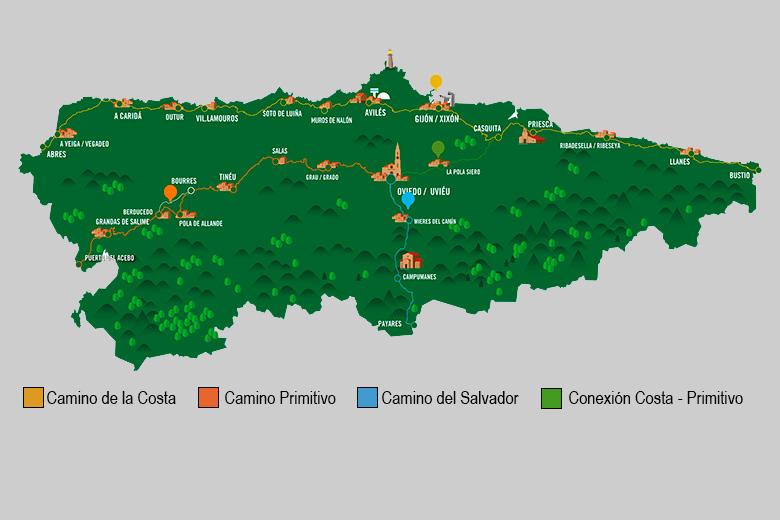
From Asturias you can choose the coast or the interior!
So it is clear that the Caminos del Norte offer you a wide variety of choices: You can choose to reach Asturias from the French Way via the Camino del Salvador. Or also link from the Camino de la Costa with the Primitivo, and the Primitivo with the Camino de la Costa. Or do the whole of the Coastal Way. Or do the Primitive, starting from Oviedo/Uviéu.
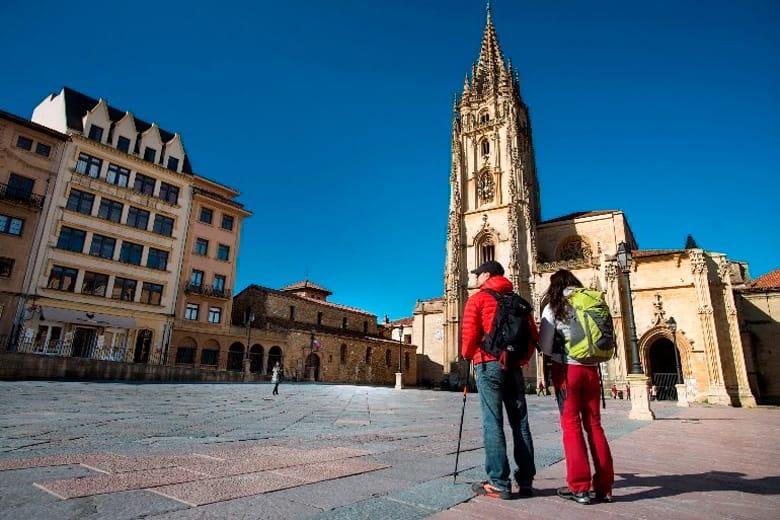
As you can see, there is no shortage of alternatives, and no shortage of beautiful landscapes. On the Camino del Salvador and the Primitivo you will discover inland Asturias, the Asturias of the great mountains and valleys, while on the combined Costa-Primitivo you will see a bit of everything, both inland and coastal landscapes, and on the coastal route you will fully enjoy the charm of coastal and seafaring Asturias, which is also deeply attractive.
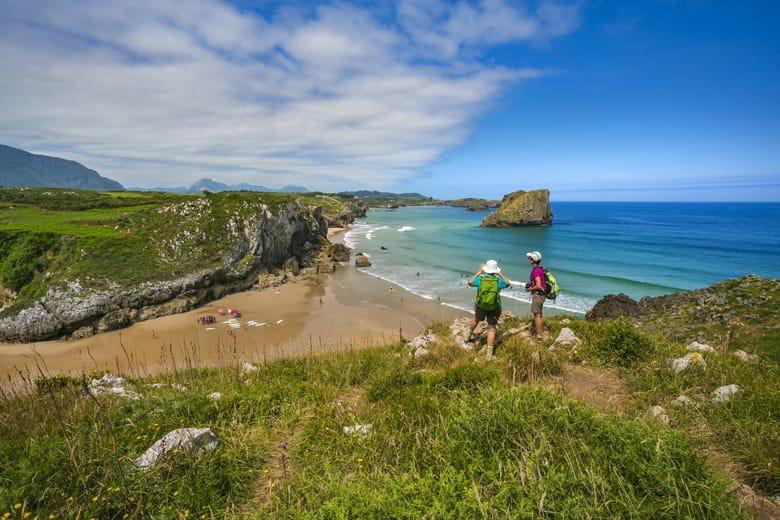
So you'll have plans to lose your taste, which means that one year you can do one Camino, and the next a different one, until you complete them all.
Take your pick and get on the Camino!
Lightweight and accurate luggage
One of the most significant premises of your pilgrimage, for it to be fully satisfactory, is to carry in your backpack all the basics and essentials for a good Camino.
Try not to make the mistake of novice pilgrims, who sometimes carry backpacks that are too heavy, which can be a nuisance for the pilgrimage. The ideal, in general terms, is that the backpack does not exceed 7 or 8 kilos in weight, and that it is comfortable. It should also be well adjusted so that it does not sway, thus avoiding extra strain on your back.
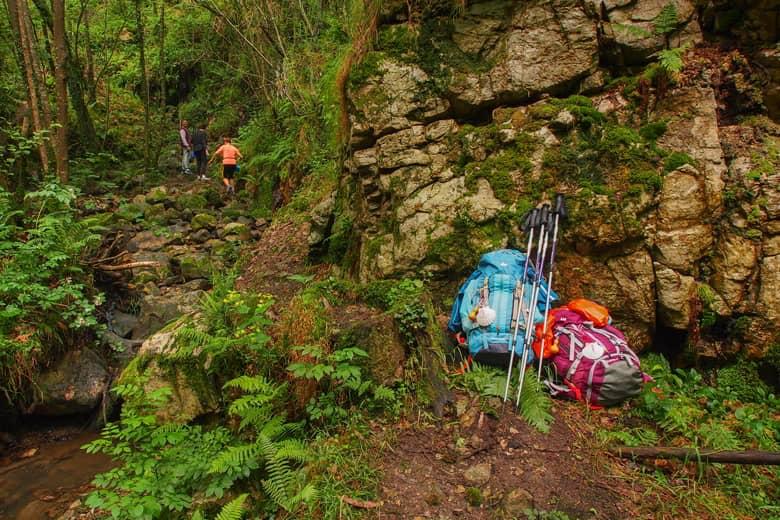
Once you have established these basic logistical parameters, make a brief list of what you should not miss in your backpack. We remind you that it is interesting that you incorporate a small first aid kit especially for blisters, chafing and muscle overload, which are usually the most common incidents on the Camino.
In addition, and more in Asturias, due to the landscape, orographic and climatic characteristics, you should bring clothes and footwear for hiking and mountain, and always something warm, as well as a mackintosh and backpack protector in case, at some point, it starts to rain.
Don't forget comfortable clothes for after the hike. A hat, sunglasses and sunscreen are also a must. And very important, a water bottle, which you can fill up with fresh water at the fountains along the Camino. And to top it all off, complete your Camino backpack with personal hygiene products.
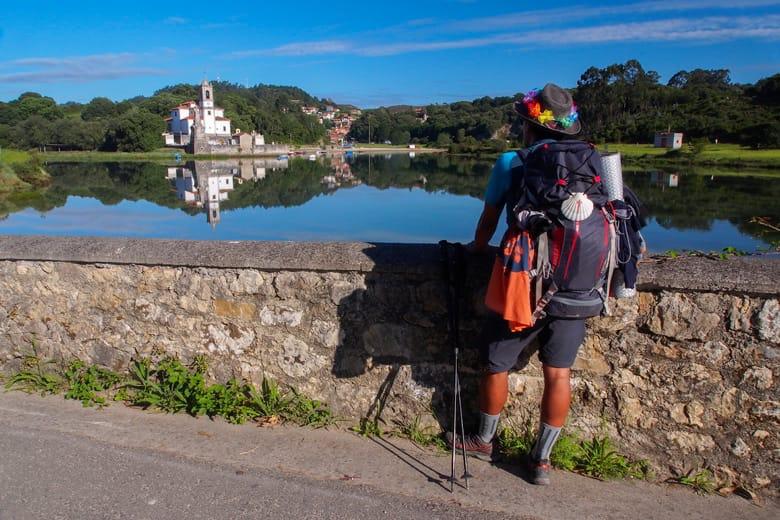
You will find that, due to the diversity of landscapes and terrains, in Asturias you will be a multifaceted pilgrim: you will be making the effort of a true mountaineer, or you will enjoy the pleasure of a quiet route, or you will walk with the sea breeze and the murmur of the waves as wonderful travelling companions. So all these recommendations are very useful for you.
And if you do not want to carry your luggage on your back, you have companies that transport your things from one accommodation to another, so you only have to focus and concentrate on enjoying all that the Camino de Santiago offers you, whatever route you have chosen. Some options are El Camino con Correos, Taxicamino or Asturperegrinos.
Take the opportunity to immerse yourself in history and legends.
If something is consubstantial to the essence of the Camino de Santiago, and in Asturias to a superlative degree, it is history and the many legends that have arisen in the course of time and events.
The origin of the Way is in itself a great historical event, inseparable from the vicissitudes of the kingdom of Asturias. On this basis, in every centimetre of the Way, history comes to meet you.
Cities and villages, churches, hermitages, monasteries, civil architecture, etc. make up a cultural heritage that explains the great puzzle of the History of the Way. There are also pilgrims' cemeteries - such as the one in the cathedral of Oviedo/Uviéu - or the remains of pilgrims' hospitals, both elements that give you an insight into the intrahistory of the Way from the Middle Ages onwards.
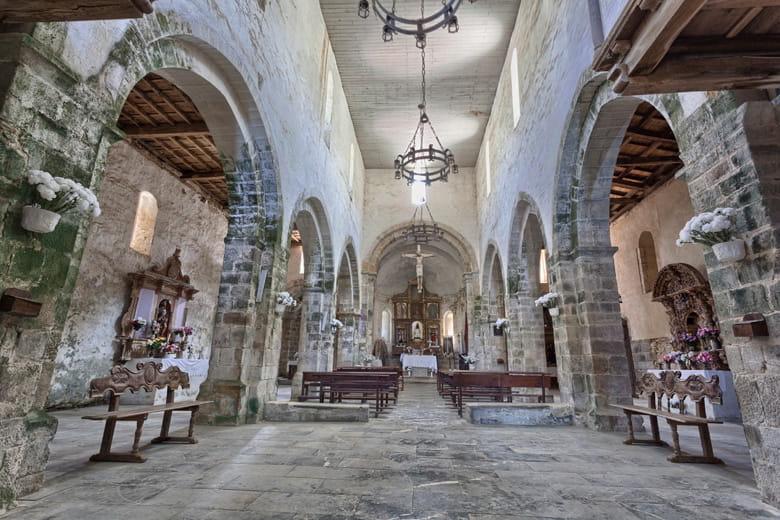
And then there are the legends, which ooze everywhere: in the Monastery of Oubona, in Tineo; in the Monastery of San Salvador de Cornellana, in Salas; in the reservoir of Salime, in Grandas de Salime...
Your Jacobean experience will be punctuated with unforgettable stories and legends!
Discover pre-Romanesque art
Doing the Way of St. James through Asturias is to discover a unique art: the so-called Asturian Art or Pre-Romanesque Art. That which was conceived and developed during the more than 200 years that the kingdom of Asturias survived. And that will meet you on the Camino de Santiago itself.
At different points along the Way, starting in the Asturian capital, Oviedo/Uviéu, you will find testimonies of Pre-Romanesque Art. In this case, jewels of notable magnitude such as Santa María del Naranco, San Miguel de Lillo or San Julián de los Prados.

But also in rural environments, the Pre-Romanesque appears right on the Camino, and this will be the case, for example, in San Salvador de Priesca. On other occasions, you will have to deviate a few metres from your route to contemplate works of the stature of San Salvador de Valdediós.
So it is clear that the Pre-Romanesque will accompany you on your Way of St. James!
Learn Asturian language and culture
Asturian culture is one of the great attractions of the Camín when walking through Asturias. In every corner you will find an ethnographic jewel: a granary, a granary, an old mill. Or those village houses that show the best of popular architecture. Or those "chigres" with a unique atmosphere. Or the old-fashioned bar-shops. Or the palace-houses. Or the Indian houses...
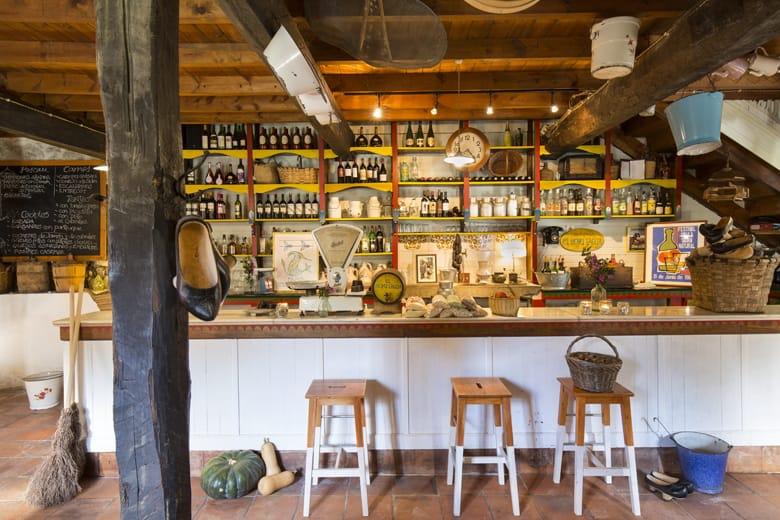
And in the cities, every wall, every tower, every palace, every porch... in short, every historic quarter, will show you an incredible cultural wealth that has survived to the present day.
Moreover, in all the natural, rural and urban scenery you will be in direct contact with the Asturian language, not only by hearing it in some cases, but also by seeing it expressed in the abundant place names along the Way: Oviedo/Uviéu, Gijón/Xixón, Ribadesella/Ribeseya, etc.
Immerse yourself in landscape cooking
The Pilgrims' Route to Santiago through Asturias is also a tasty gastronomic route, because at each stage you will discover places where the Asturian culinary tradition is very much alive.
In fact, in Asturias cuisine and landscape merge in creations and dishes that combine in serene balance the past and present of gastronomy.

You will taste succulent recipes, whose ingredients are the healthy products of the land, which play an important role and vary according to the season.
So your Asturian pilgrimage route to Santiago de Compostela will also be an immersion in this landscape cuisine that will not leave you indifferent.
Make good friends on the Camino and in the Natural Paradise
Those who are passionate about the Camino de Santiago say that, during the course of the route, good friendships are always made.
Friendships that arise between pilgrims. That are maintained over time or not, but that are always a great experience and a pleasant memory.

And as you are in Asturias, you will surely be able to make friends easily in the places you pass through. Asturians are usually affable and hospitable, and are enthusiastic about the Pilgrim's Way and everything related to it.
So it is more than likely that you will make new friends in the Natural Paradise!
Disconnect in the quiet roads of Asturias
If there is something that the Caminos de Santiago in Asturias offer you , it is the possibility of disconnection from everyday reality. Or at least that is the general impression conveyed by pilgrims.
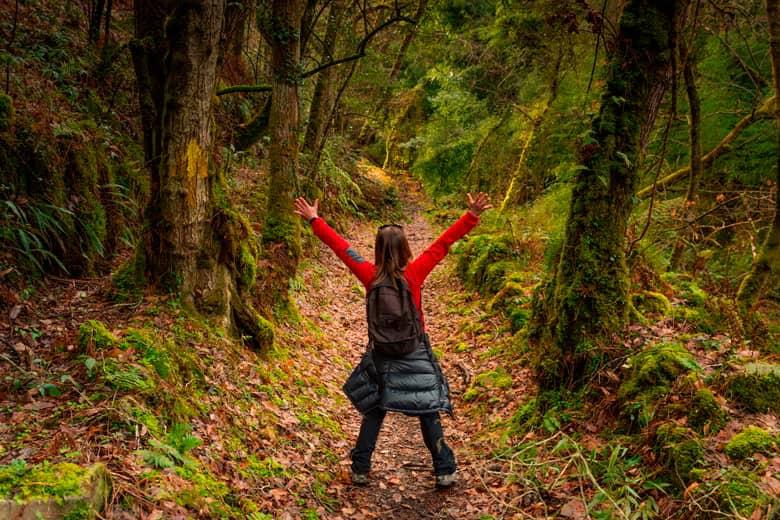
All the Routes of Asturias are quiet, uncrowded routes. Routes that reveal hidden places, full of charm. You will discover villages, farmhouses, fountains, forests, streams, rivers, waterfalls, mountains, monasteries, churches... and much more. You will be so immersed in the landscape and the scenery that your mind will be abstracted from any other vital scenario that is not the Camino.
And you will also discover small towns, lively, dynamic and with an interesting historical heritage.
In fact, on the Asturian Pilgrims' Routes you will experience the true spirit in which the Pilgrim's Way was born and grew.
Rest in hostels or other healthy accommodations.
The Camino is an experience, and undoubtedly requires effort and discipline. And although it is true that each pilgrim plans and lives it in their own way, according to their own criteria, rest at the end of the day is of vital importance.
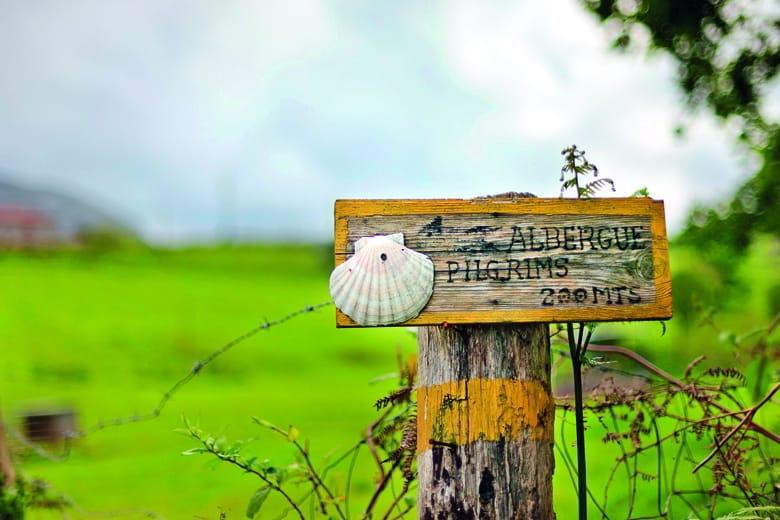
You can tailor the stages to suit you, covering the distance that best suits your needs, and dosing your strength as best suits you.
You can stay in hostels, or in other types of establishments, knowing that in both, your well-deserved rest will be healthy, and will provide you with the necessary well-being to continue the route.
Tell the story of your adventure and help other pilgrims.
Taking notes of your life adventure on the Camino can be rewarding. And it is true that you can write a Jacobean notebook with an intimate vocation, that stays only for you and whoever you want.
But it is also true that you can spread your experience through online channels, such as a blog, a website or your social networks. And whether in real time or not, your narrative thread can enlighten other people who are preparing the Camino, who are on it or simply who are lovers of different travel stories.
However, one thing is clear, online channels are already part of our daily lives, and they are a way of information, consultation and enjoyment that is here to stay.
Tell us about your Jacobean journey and many people will thank you for it!
It is also worth mentioning that there is a mobile application from the State Security Forces and Corps, to alert you to risk situations and receive security alerts, also enabling you to share your geolocation with the State Security Forces and Corps themselves.
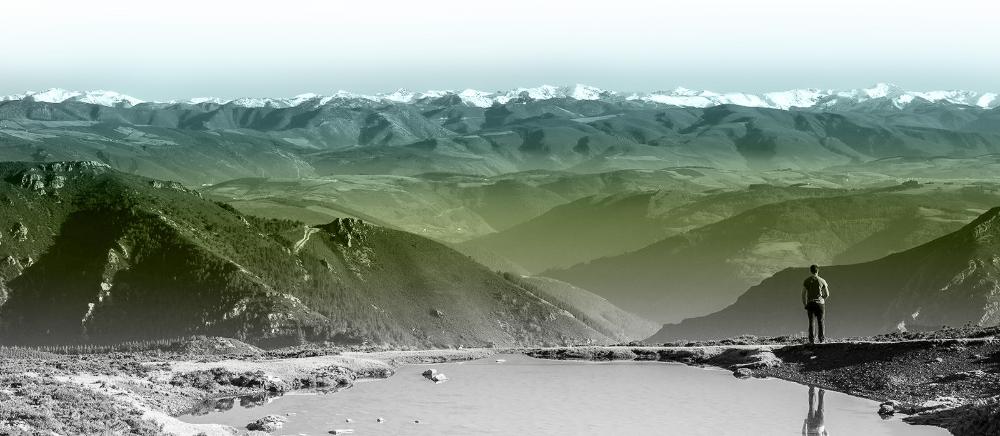
Subscribe to our newsletter and take advantage of offers, discounts, and news
Subscribe


